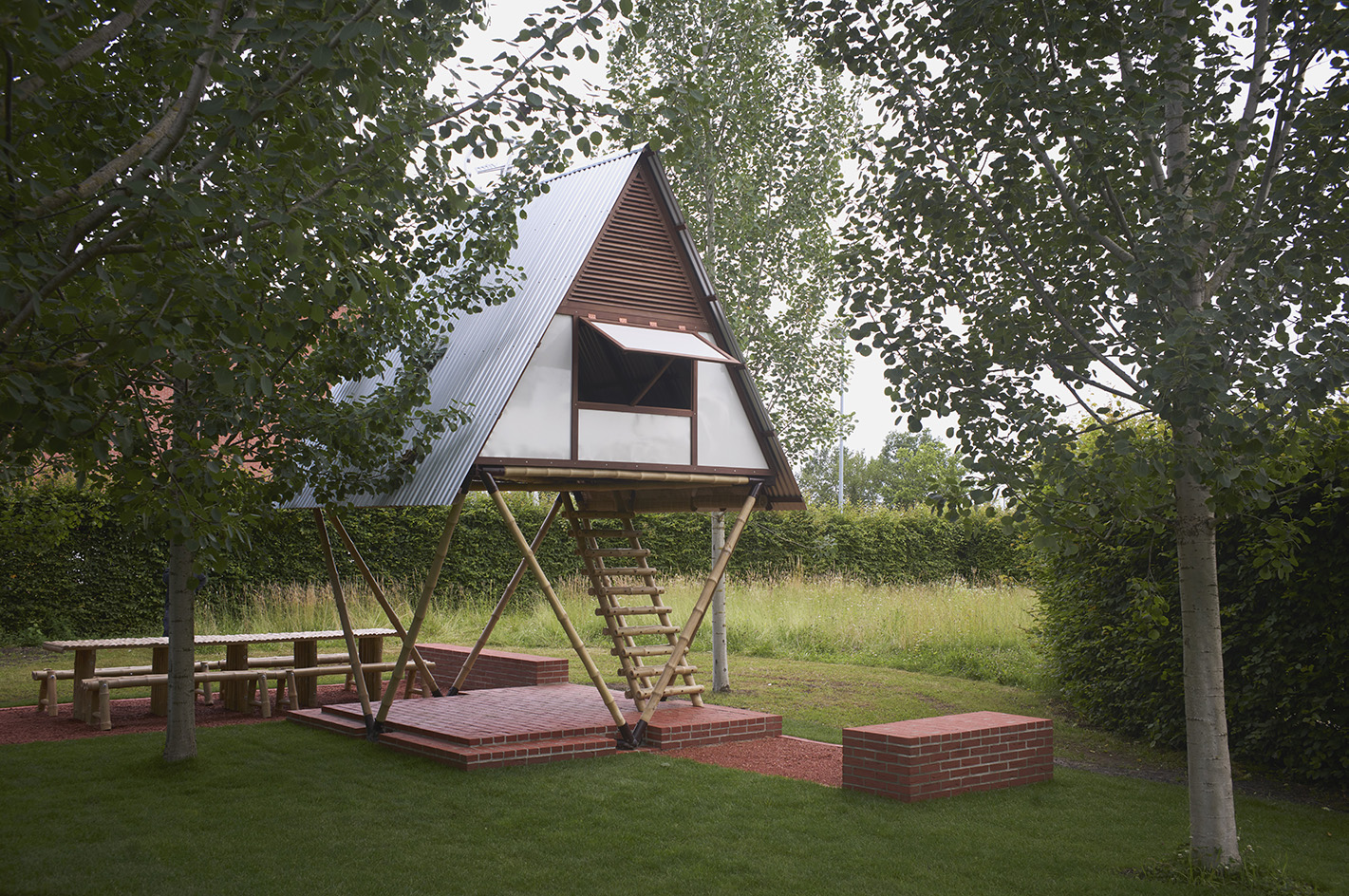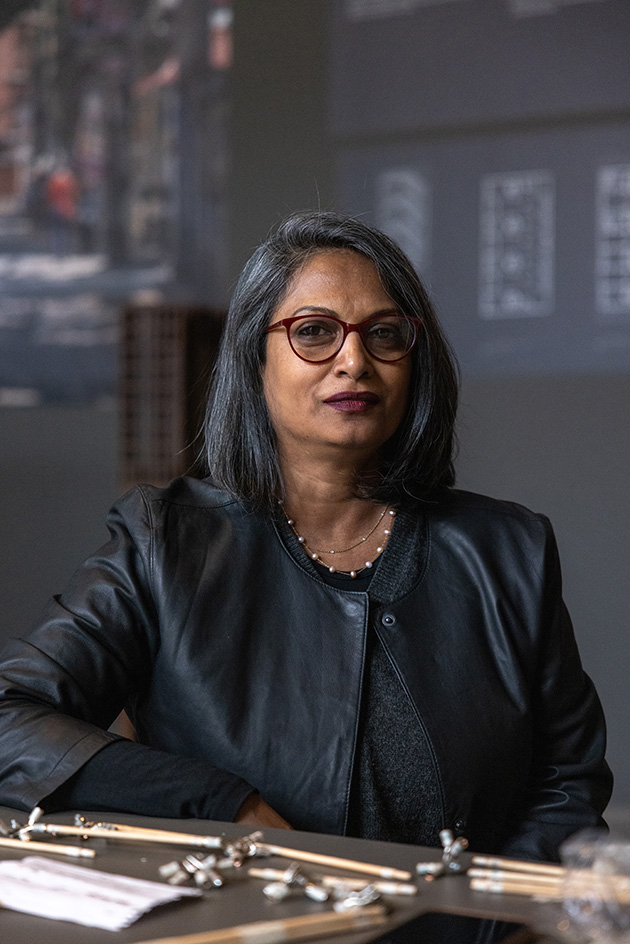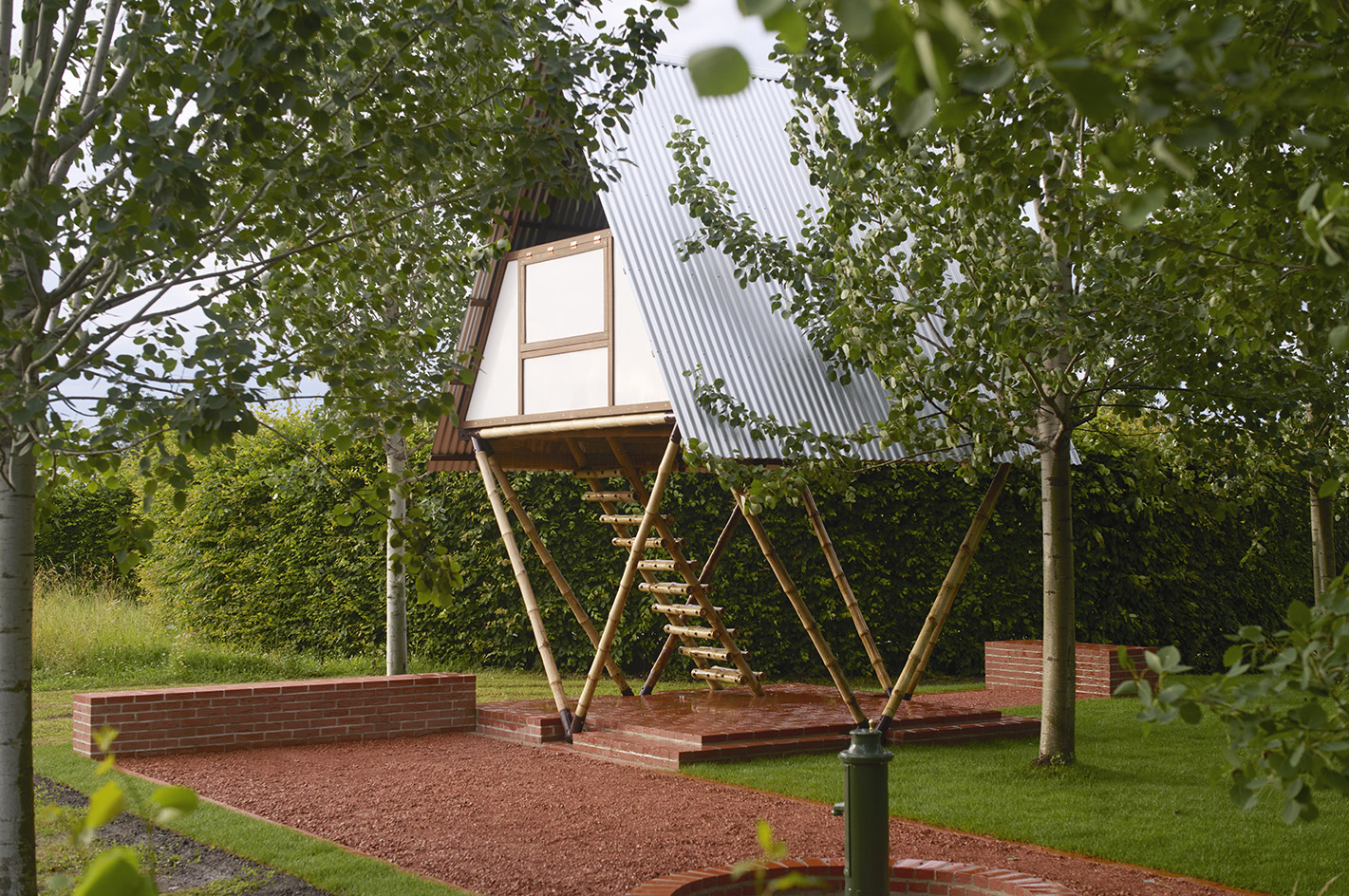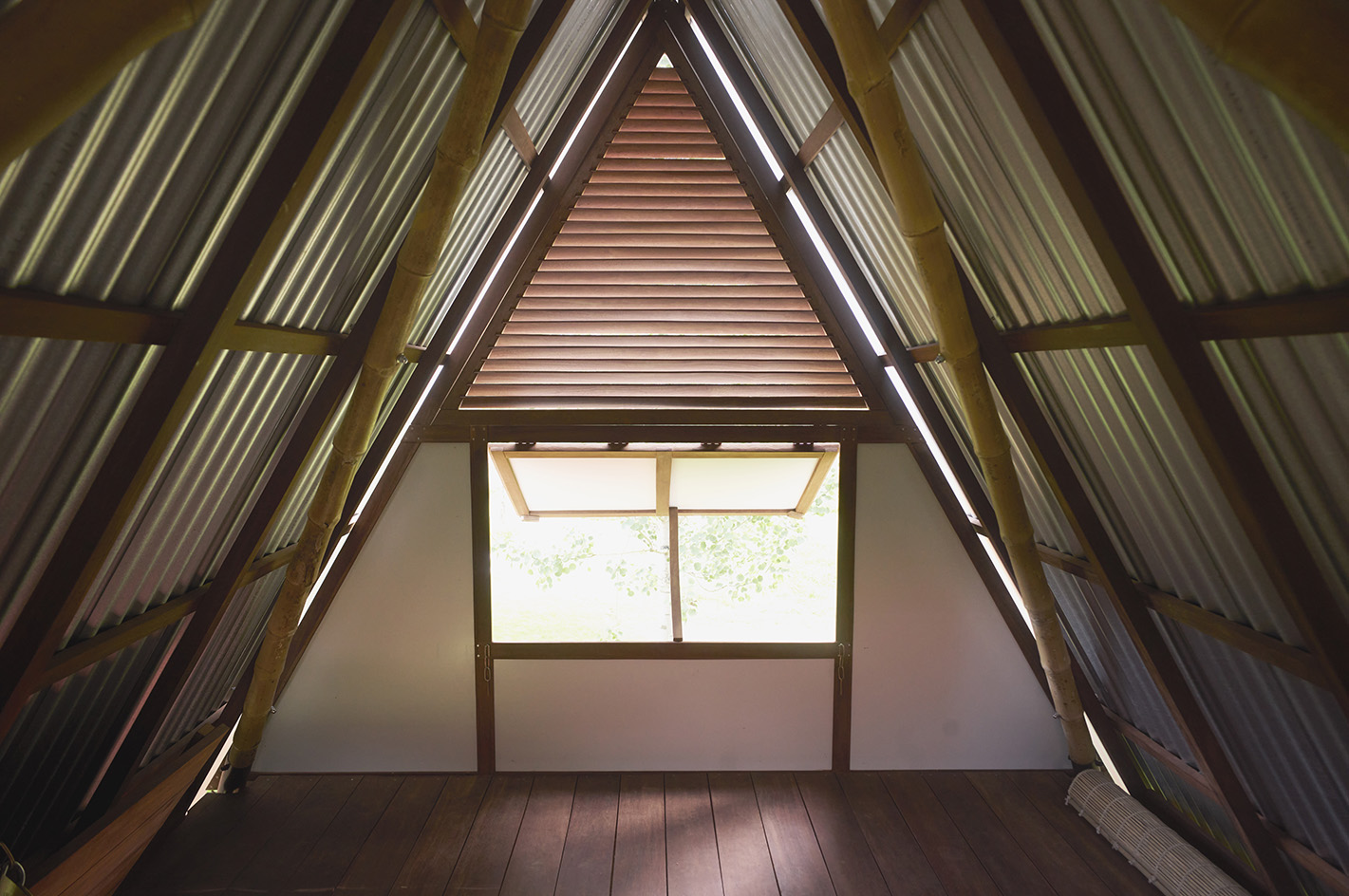
Khudi Bari means 'little house' in Marina Tabassum's native, Bangladeshi language. The structure's compact volume, newly installed among the green expanses of the Vitra Campus, just outside Piet Oudolf's garden, easily reinforces its name. It is small, crisp and beautiful, seemingly delicate and almost disappearing among the tree canopies around it. But don't be fooled; its design represents a mammoth idea, a sturdy and efficient construction conceived after lengthy research to tackle the significant natural and human-made disasters that the architect's home country of Bangladesh has been suffering.
Telling the story of all this and more, the installation of Khudi Bari in the grounds of the famous site in Germany's Weil am Rhein is a celebration of Tabassum's thinking; this dynamic, important example of her hyper-local thinking and socially driven work has now become part of one of the world's most famous collections of architectural structures.

Step inside Khudi Bari by Marina Tabassum
This 'little house' was designed as a response to Bangladesh's recurrent and frequent flooding disasters, a result of climate change. The country's positioning on the Bengal Delta, at the mouths of three large rivers, makes it prone to flood as the Himalayan glaciers melt due to Earth's rising temperatures. A staggering 80 per cent of Bangladesh is floodplain.
'[The country] is more of a waterscape than a landscape,' Tabassum says. 'In Bangladesh, there are these houses in the local vernacular, a kind of our own “Ikea”, that can be bought in markets. But they are often too big and expensive to reach those who need them the most.' She set out to create her own, compact version, made of affordable materials, conducting workshops with local communities to connect with them (not an easy task, building a relationship of trust with the different communities involved, Tabassum stresses) and work out who needs them the most; but also to spread the word about the design and teach local people how they can be built. Through a foundation she has set up, dedicated to this cause, Tabassum has already built 100 Khudi Baris across Bangladesh.

Tabassum and her Dhaka-based architecture studio composed Khudi Bari as a modular home prototype. The design is cost-efficient to build and move, demountable and easy to erect without specialist building knowledge. Made of bamboo and corrugated steel panels, it can be transported easily to house people who have been displaced due to floods and then moved again if needed as water plains change, sandbanks and plots become eroded and households need to move again. Its main enclosed space sits high above the ground level, ensuring water can flow through its base if needed, while people and their possessions can remain safe and dry above.
'It began as a small house but became a system that can be scaled up,' Tabassum explains. 'We would like this to be public knowledge of an idea. Not something for architects only, but something everyone can make their own.'

Khudi Bari's installation at the Vitra Campus sees it become part of the furniture manufacturer's and Vitra chairman emeritus Rolf Fehlbaum's vision to put together a family of buildings displaying progressive architectural ideas and designs that challenge the norm and offer solutions, each representing their respective times. 'It is not just about old [low-tech] technology, but also about contemporary ideas,' Fehlbaum said at the Khudi Bari launch.
'Why would Vitra show something that is a necessity in Bangladesh? It could be read as exoticism. It’s not. It’s related to our work, as we have worked with Shigeru Ban and his cardboard emergency structures. And Prouvé did his own emergency houses for people who have lost their homes, one of which we have in our collection. It is an important contribution to our campus. The architecture of resilience can also be beautiful.'

Tabassum agrees: 'Vitra has an archival interest, I see this as an archive. Here, it is definitely not serving its purpose as a house, but it’s almost representational for me, showing that the climate crisis is real, we share the same planet. And the people affected have zero carbon footprint. It becomes a symbol.' It is also undeniably an elegant design. But it's an architecture that works hard for its purpose, 'it's not beauty for beauty’s sake', says Tabassum. 'And everyone has a right to beauty and to good design.'
The first, experimental Khudi Bari was built in Dhaka in 2020. It has been tweaked and perfected since, and eventually rolled out as part of the foundation's work. The architect, who has only built in her home country so far (citing her lacking local knowledge to build elsewhere), is now looking at how this little house can evolve. What's the next step in Tabassum's Khudi Bari explorations? Watch this space.







